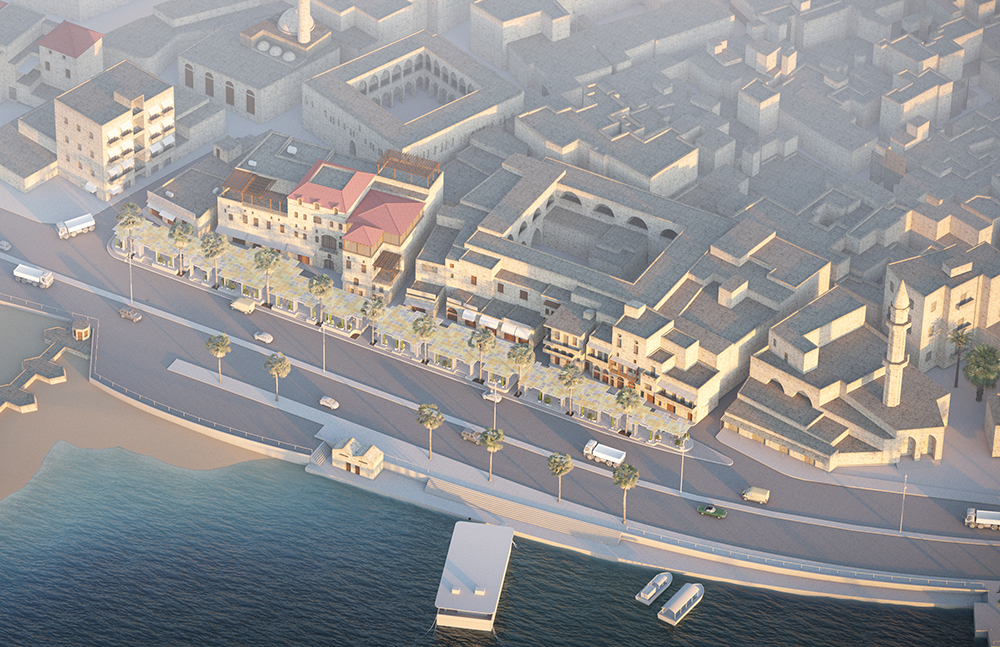
Saida Waterfront Strategy
Project Brief
Throughout its history, the historic district of Saida’s identity, economy, and socio-cultural character have always been influenced by its relationship to the sea. Since the Israeli bombardment of the city in 1982 and the development of the coastal highway in 1996, the historic district has lost its direct connection to the seafront. Recent developments and rehabilitation projects on the eastern edge of the district have reactivated a number of important socio-economic nodes that accentuate this lost connection. These include the Sheikh Zayed Public Garden, the Bahr El Eid Revival project, Tawlet Souk El Tayyeb restaurant, Khan El Franj, the Fishermen’s port, and the cluster of popular coffee shops. However, these interventions remain scattered and disconnected from one another, preventing them from reaching their full potential. They need a strategy linking them together and unifying the historic seafront of the city.
Students participating in the GSAPP Columbia workshop proposed an integrated urban strategy that considers the city as an interconnected entity, and not necessarily as different separate competing sectors. If the city as a whole, including its people and environment, is resilient and healthy, then its tourism and economy will thrive.
Map Legend:
1 - Sheikh Zayed Public Garden
2 - Tawlet Saida Restaurant
3 - Bahr El Eid Revival Site
4 - Khan El Franj
5 - Strip of Coffee Shops
6 - Fisherman’s Port





